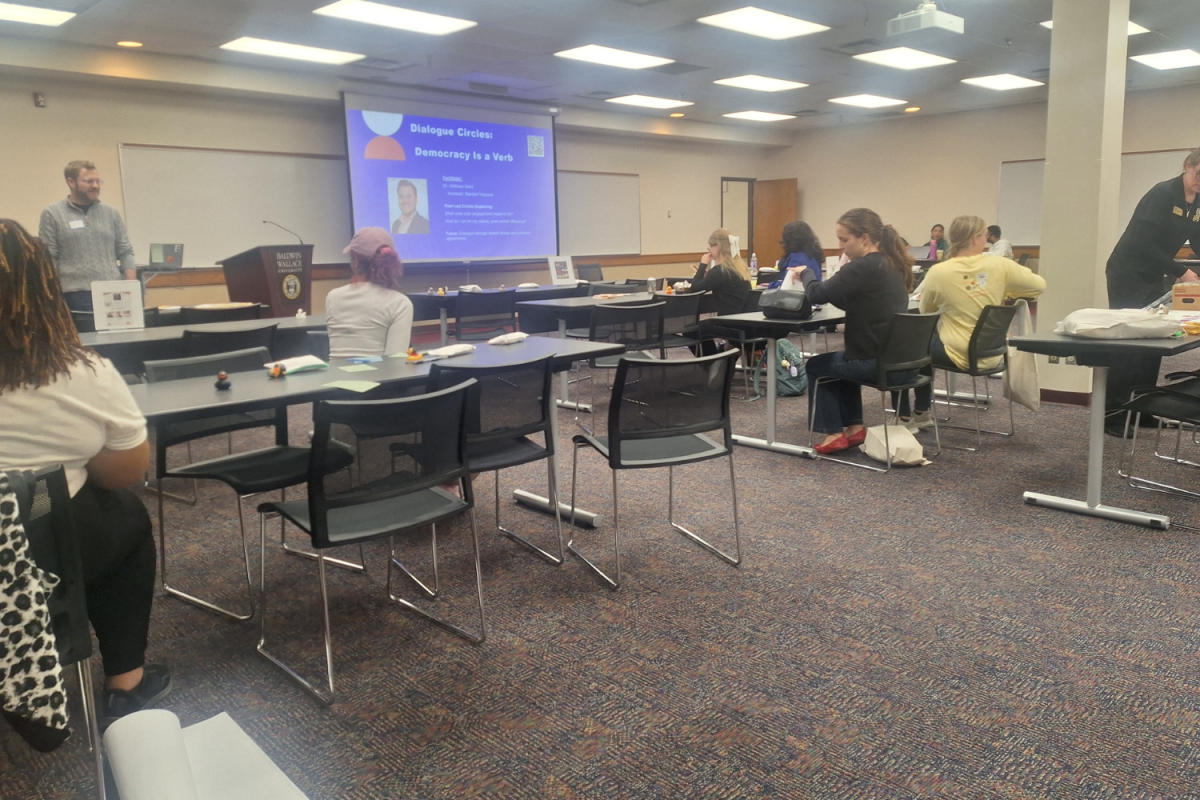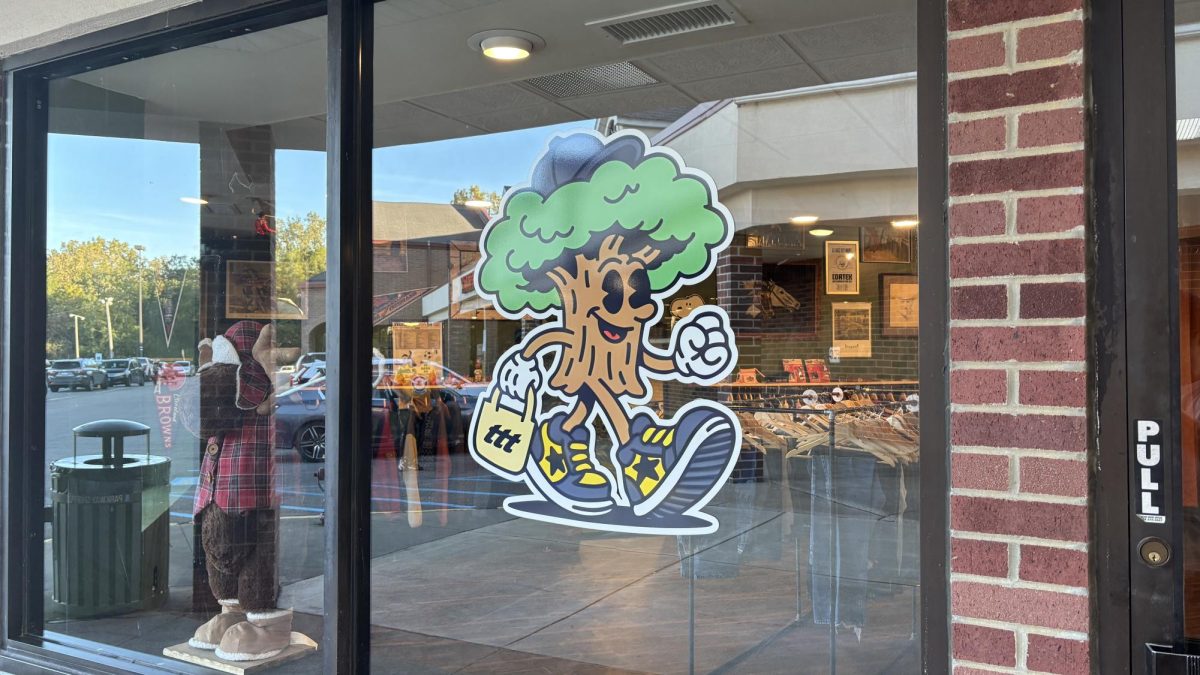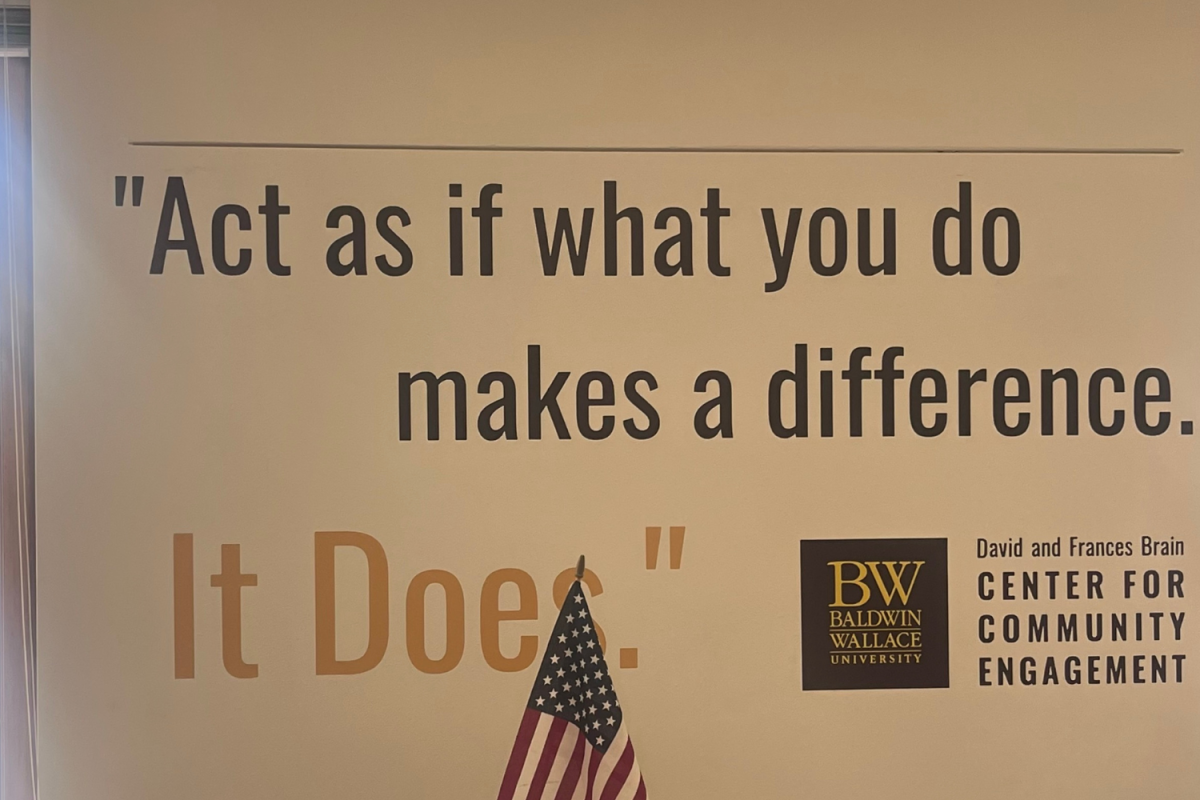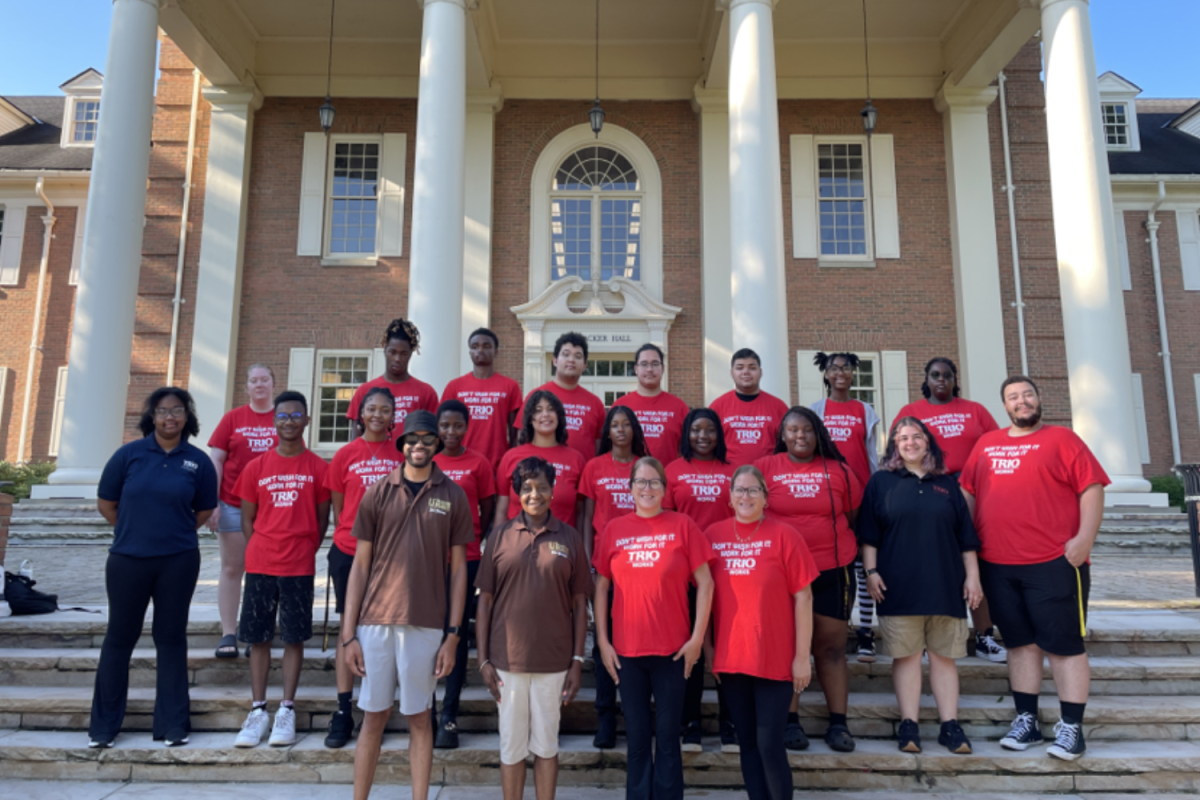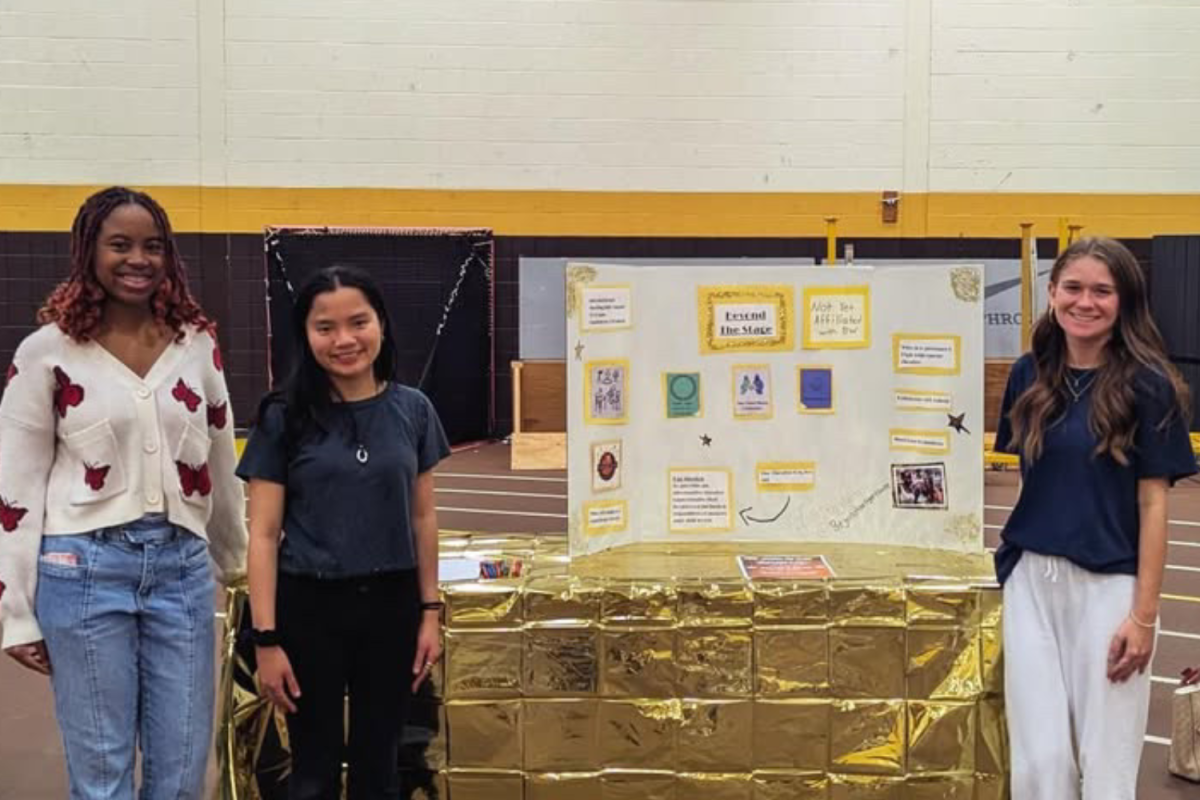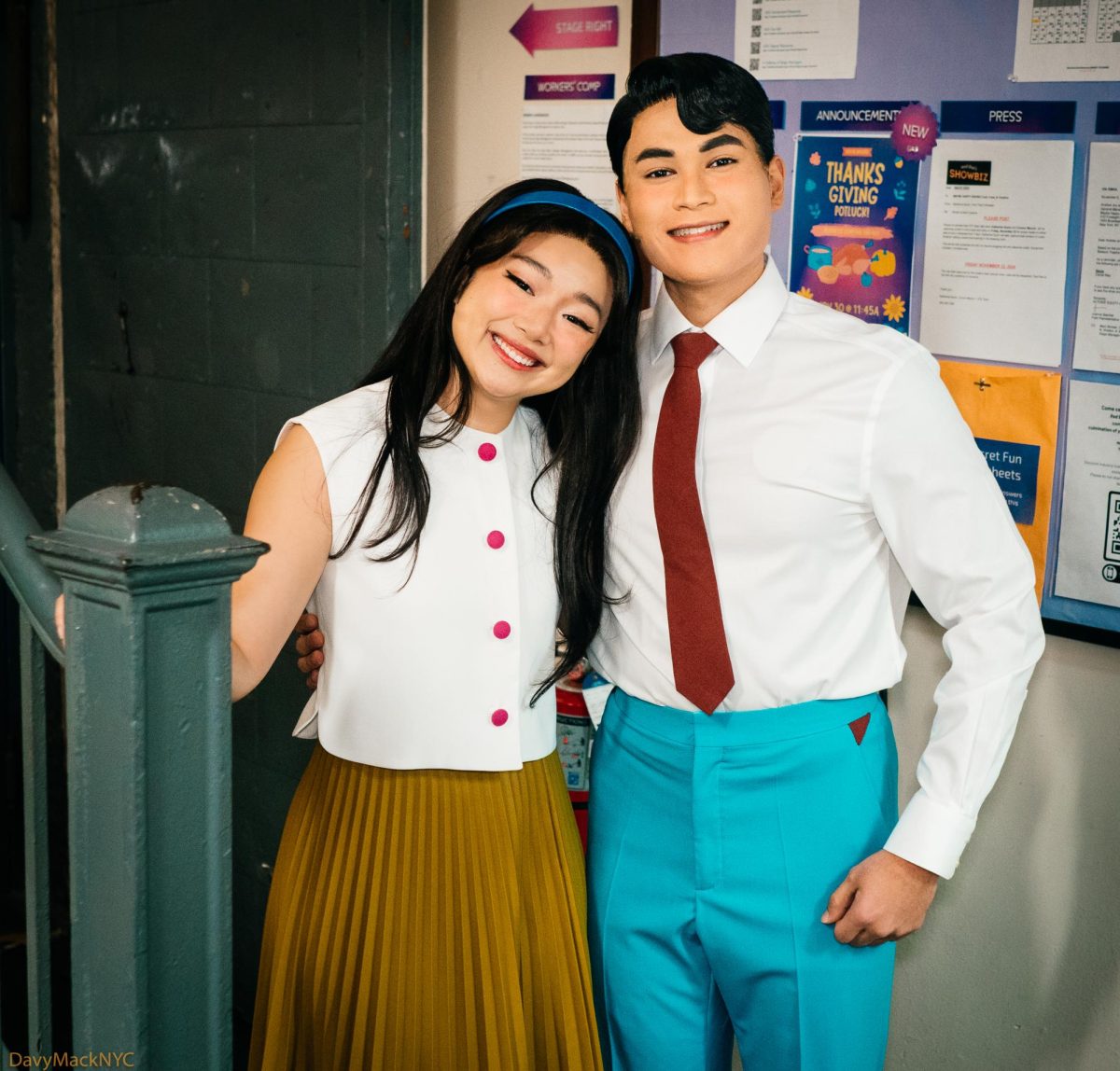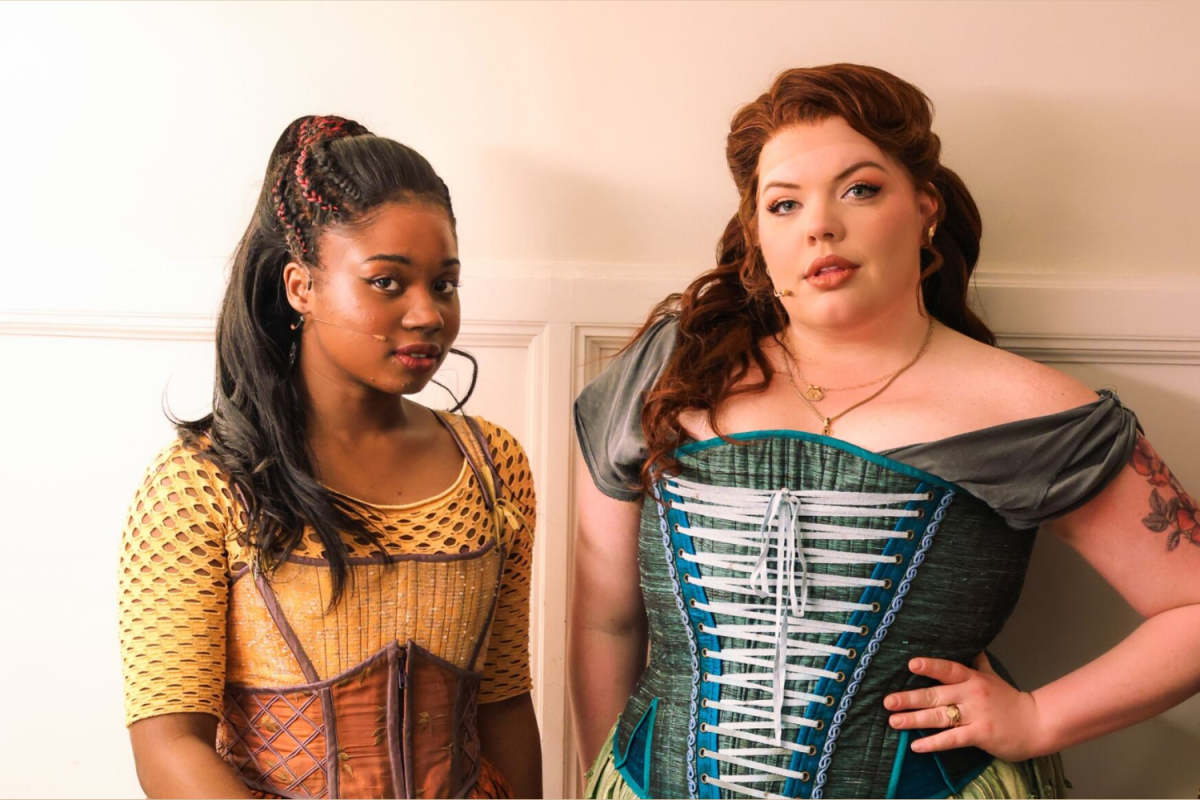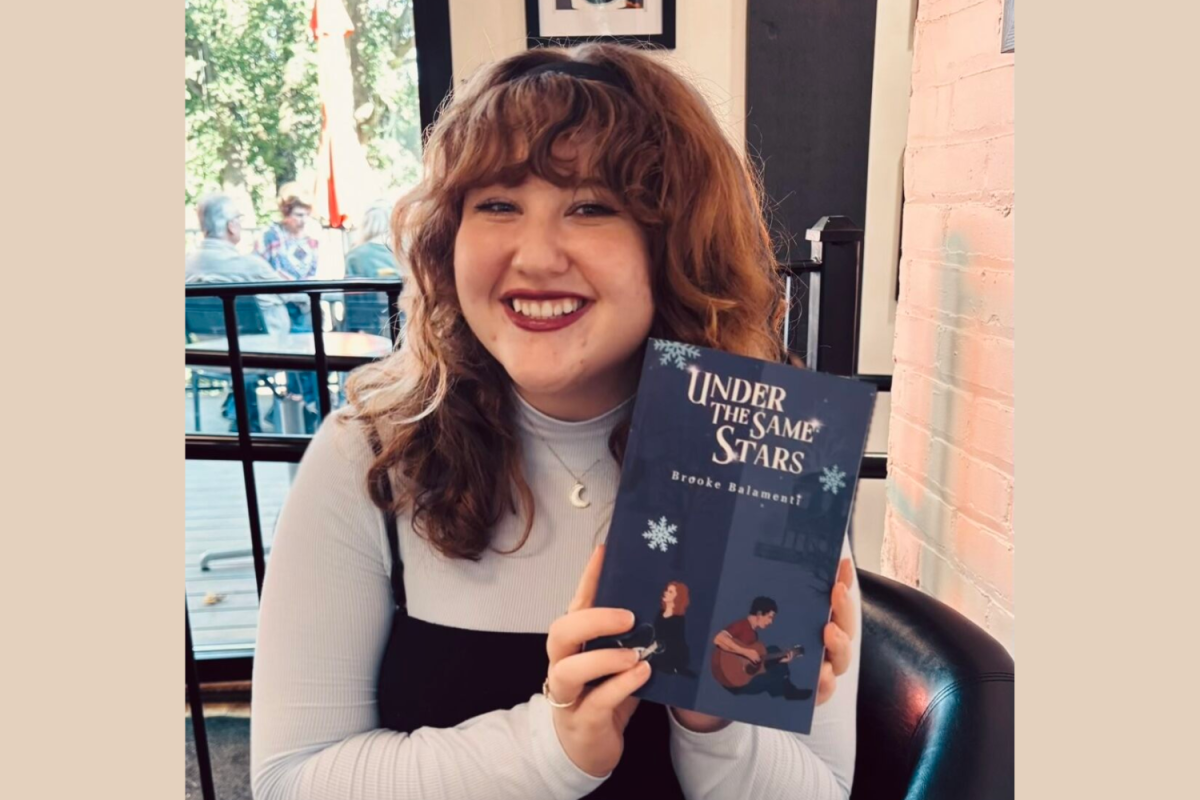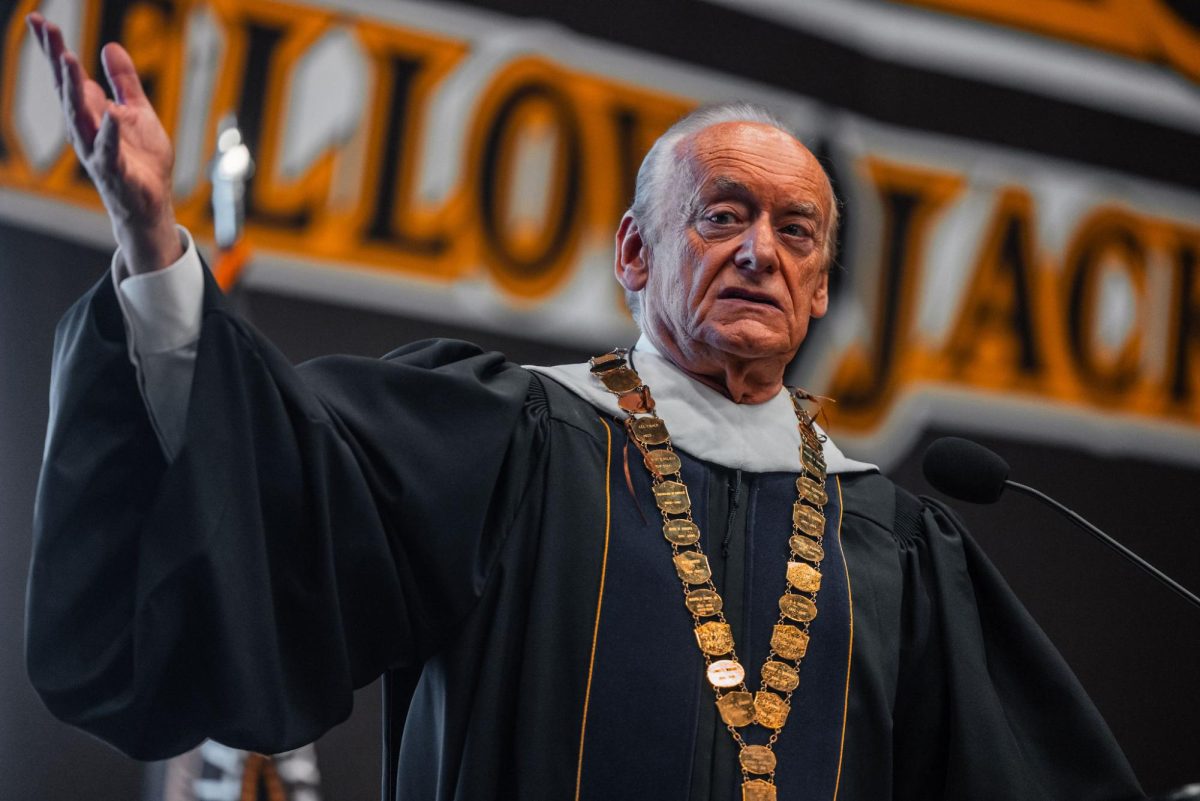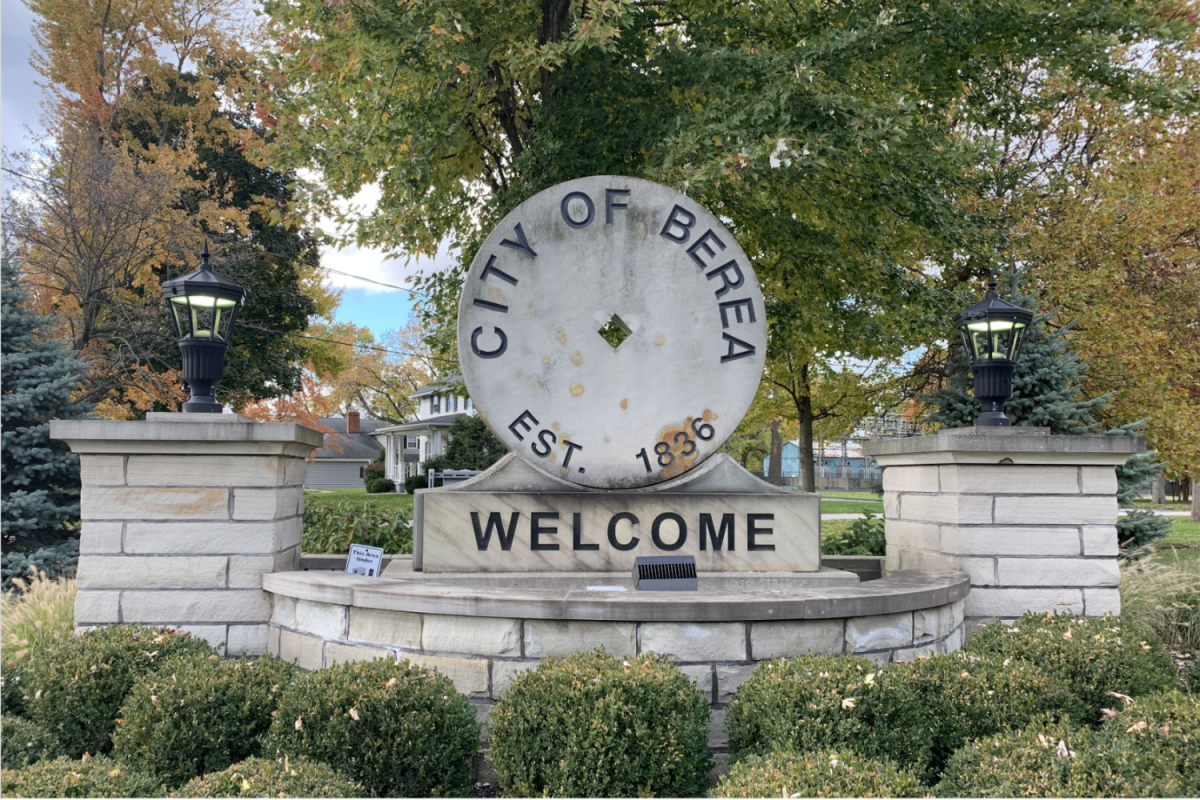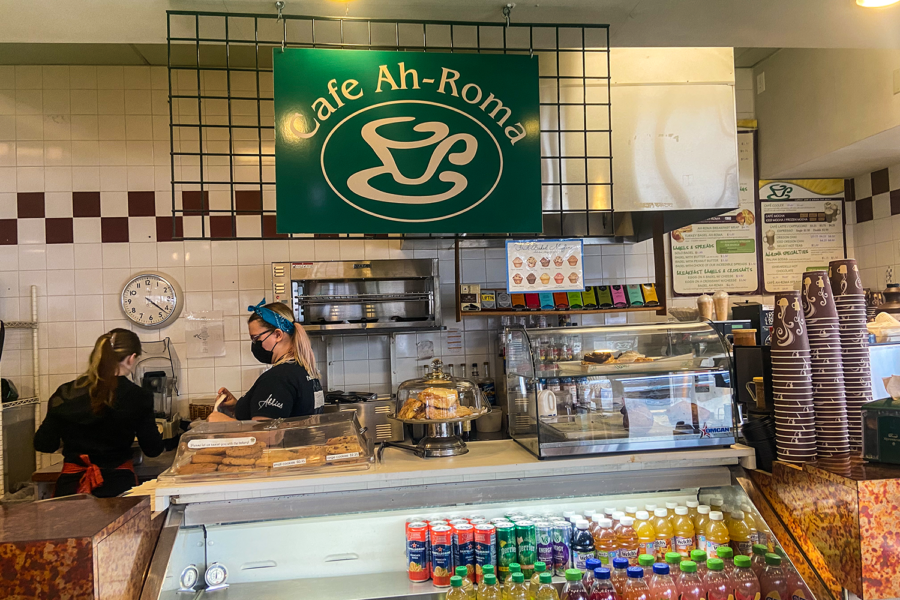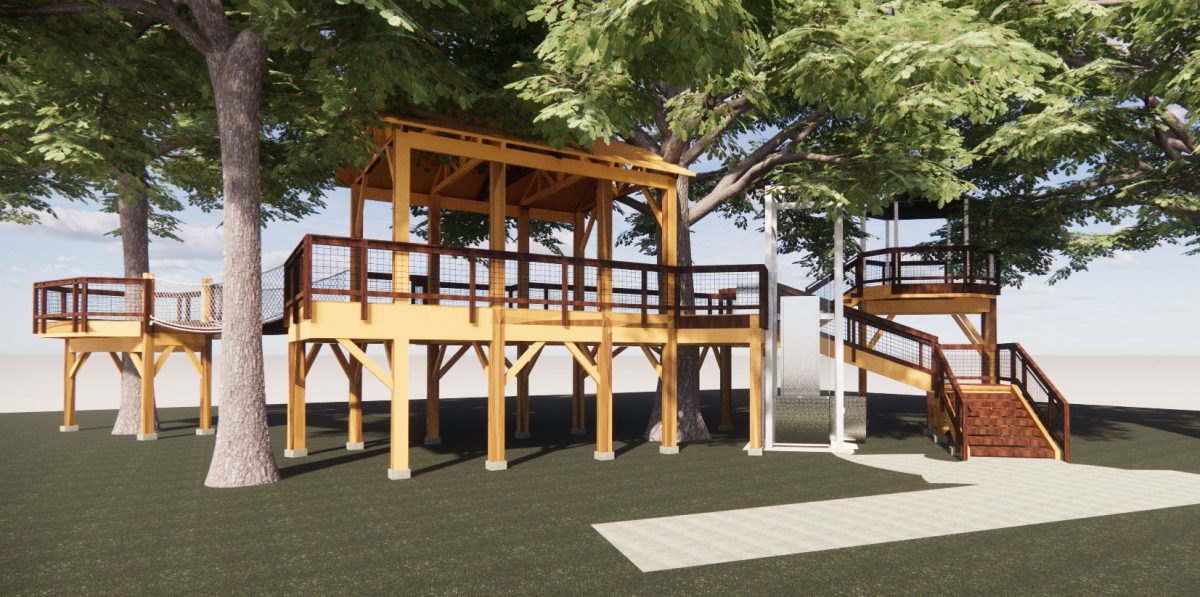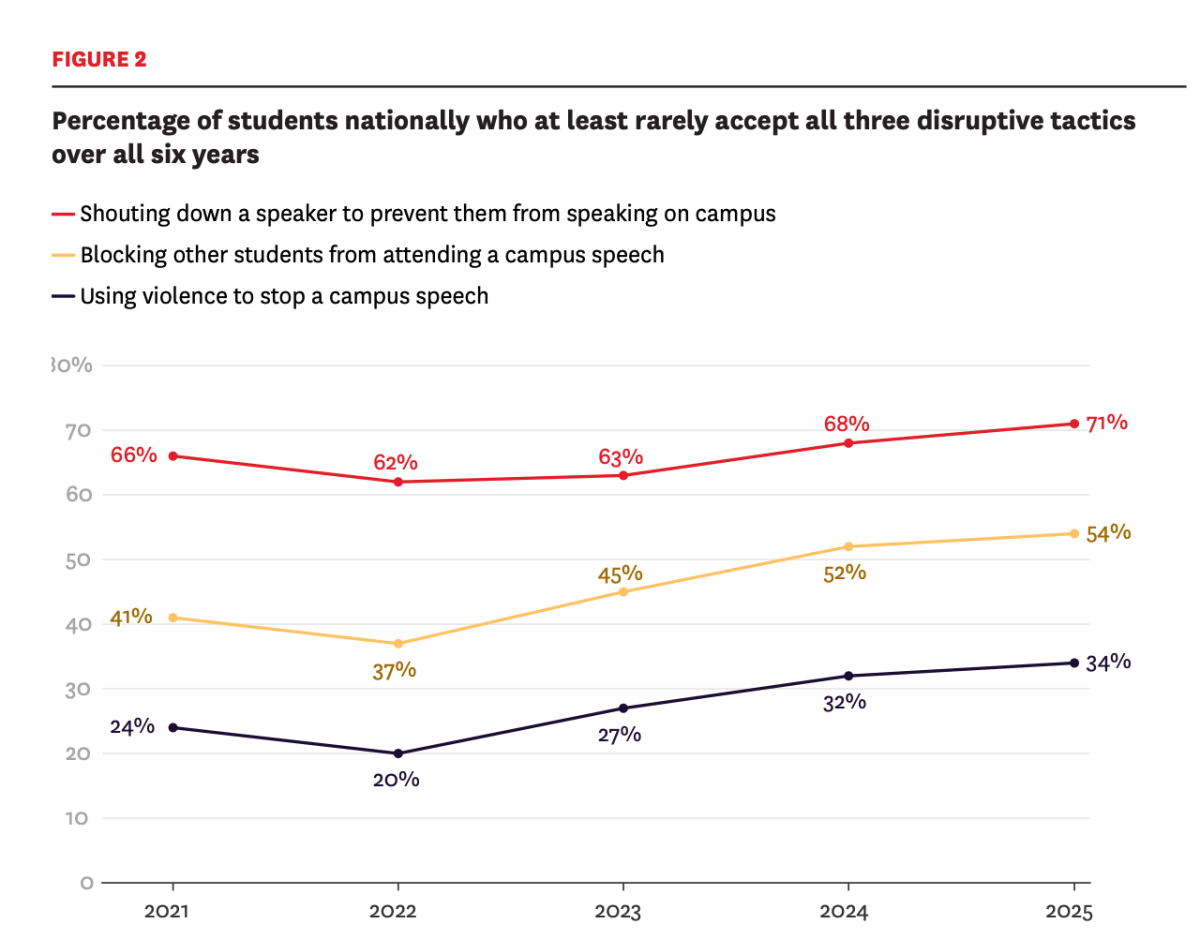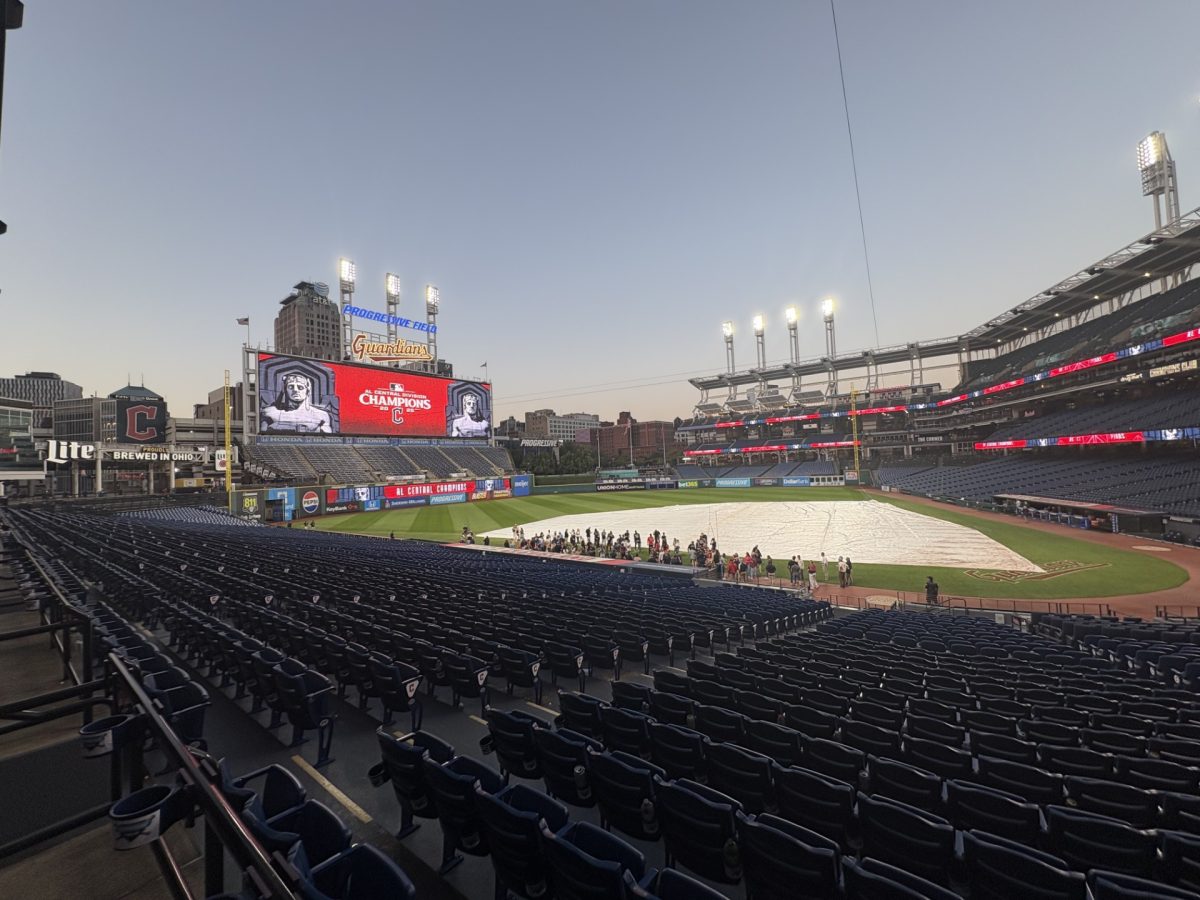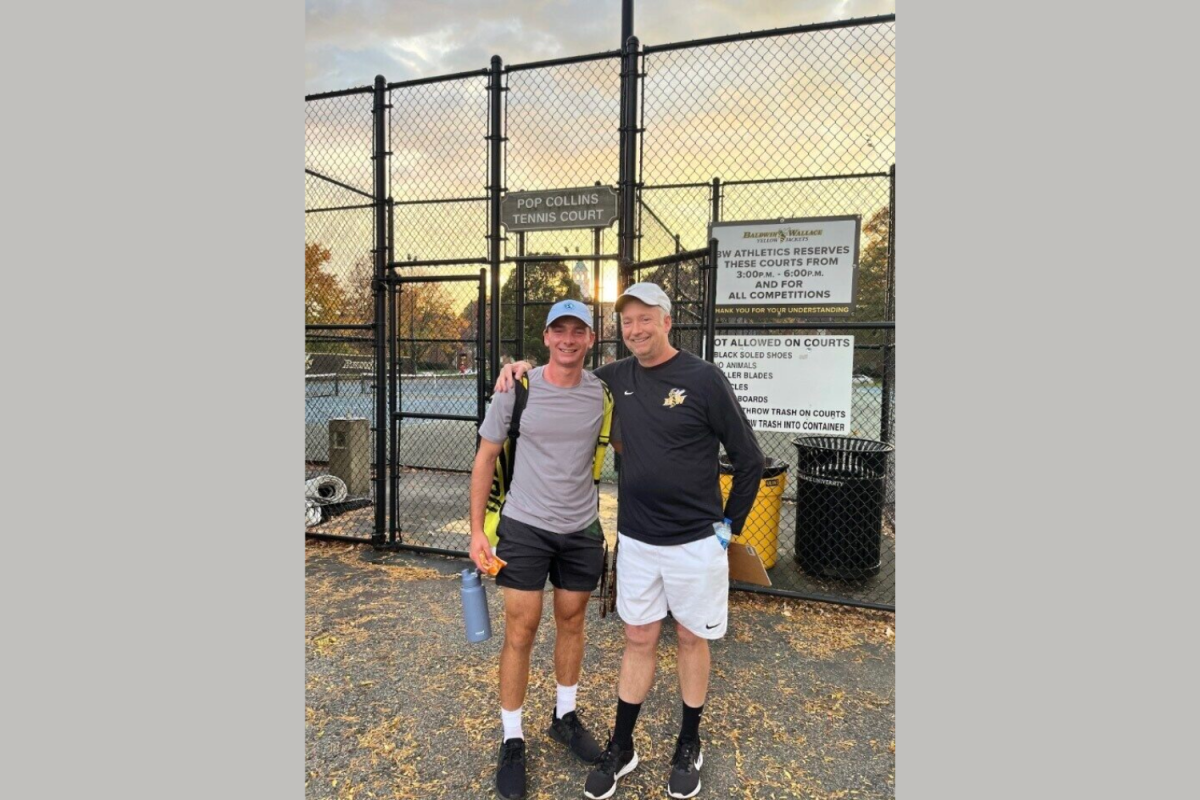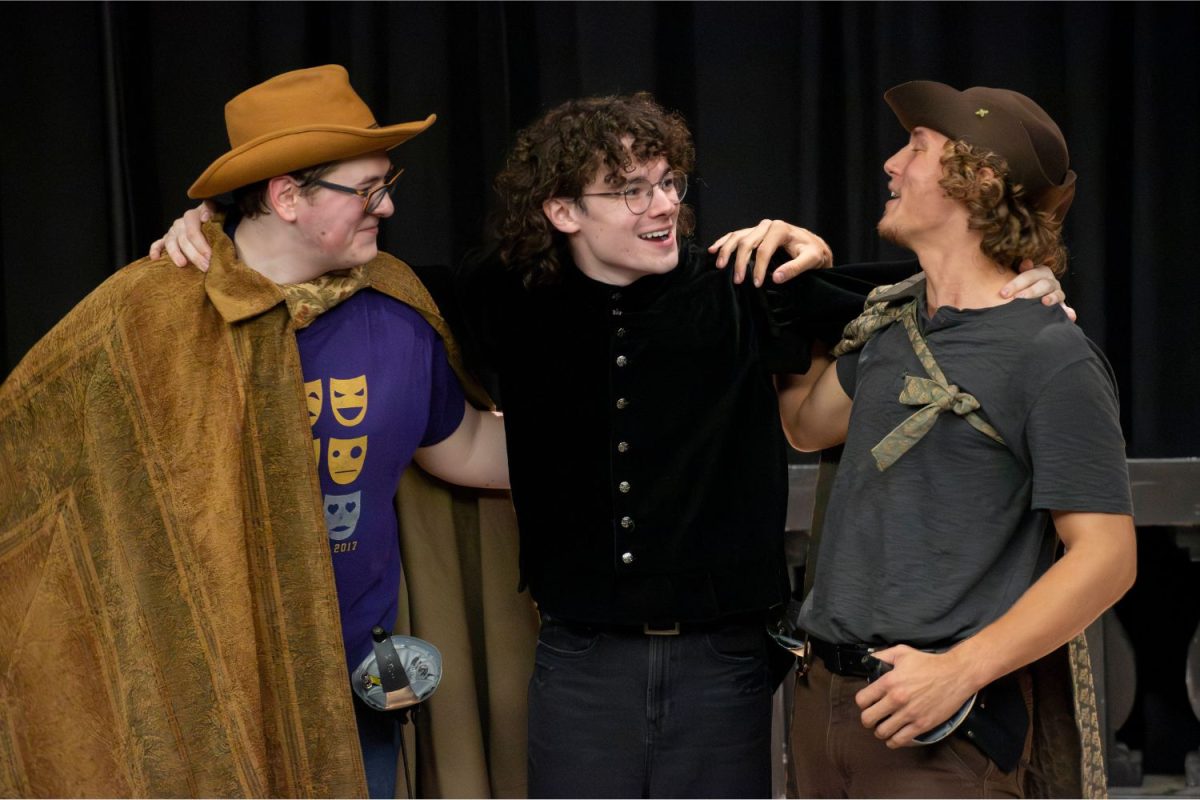Baldwin Wallace University theater students explored minor characters’ perspectives with dark comedy “Rosencrantz and Guildenstern Are Dead” that premiered last night in Fynes Hall in the Kulas Musical Arts Building.
Written by Tom Stoppard, “Rosencrantz and Guildenstern Are Dead” reimagines William Shakespeare’s “Hamlet” by asking the question, “What if Hamlet’s childhood friends Rosencrantz and Guildenstern were the play’s leads?”
Directed by Directing Program Coordinator René Copeland, this comedic play takes “Hamlet” and tells it from the perspective of Rosencrantz and Guildenstern, two characters who struggle to understand their purpose in life as the plot of “Hamlet” progresses in the background.
Copeland said: “There are these really cool times where it sort of feels a little like an existential angst kind of play, but it’s actually a comedy, so it’s sort of fun to … explore all those very interesting topics for theater to explore while doing it in a comedic voice.”
Sophomore B.F.A. acting student Jonathan McPherson, who played Rosencrantz, said that the two titular characters have much more development than in “Hamlet,” and they both have very separate personalities. While Guildenstern is an analyzer, Rosencrantz is a reactive individual who cares strongly about a situation before thinking about it logically.
“One of the things that stuck with me throughout the course of the show is the idea that everybody is the main character of their own story, even when there are legitimate main characters of a different story,” McPherson said.
Part of this play involves a group of actors called the Tragedians who perform “The Murder of Gonzago,” a play that mirrors the incidents within “Hamlet,” to the Dutch court. Senior B.F.A. acting student Greta Bedell portrayed The Player, a mysterious and charismatic individual who leads the Tragedians.
“[The Player is] not really an all-knowing figure, but a more-knowing figure,” Bedell said. “I am aware of death … and that it’s going to happen in this play. I am aware of the fact that ‘Hamlet’ is going on around us.”
Bedell said that much of the play’s script is vague and “nonsensical,” which “leaves the whole show up to the interpretation of the actors and the director.”
McPherson said that his favorite part of the production process was getting time to sit with Stoppard’s script because “when you give it a chance to run, it flies.”
“When we’re rehearsing and we’re working on a scene, sometimes I just want to keep going because the next bit is even funnier than the last,” McPherson said. “I think it’s the biggest and most fun part of the production—to do the script justice and to really give it the performance it deserves.”
“Rosencrantz and Guildenstern” had a 22-person cast, and Copeland said that she admires how these students have been able to add their creativity and interpretations into the rehearsal room. While it could be chaotic at times, she loved their “bouncing energies.”
McPherson said: “It’s a great thing to see all these artists working in this space and working out there as one. But also, every person put in an amount of work in this production, which is incredibly astonishing, and I’m happy I’ve gotten to work with each and every individual on the show because they’re all extremely talented.”
This show proved challenging for this large cast because of their non-traditional theater space in Fynes Hall. The recital hall does not have the same theatrical tools as Kleist’s Mainstage or Black Box, so Copeland and the tech staff had to figure out how to make the space work.
“So the fun challenge about it has been, ‘how can I make this play belong in this space?’” Copeland said. “I wanted to feel like it genuinely just made the most of the space as we have it. So, I am using the whole room, not just the stage, so that’s kind of a fun challenge for me as a director.”
Junior stage management student Stephanie Montini, who acted as a production stage manager for the first time, said the play utilizes a very minimal set and not many props. She said that while putting a play together inside the Conservatory has been challenging, the cast and their acting have made the recital hall look larger than its actual size.
“We added some black curtains, which really makes it feel more like a theater instead of a concert hall,” Montini said. “The actors do a great job of making it feel less like an orchestra could play in the same space as you.
The actors will made use of the entire Fynes space, getting up close with the audience and performing in all available areas of the room, which Montini said provided audiences with a very intimate theatrical experience.
Bedell said, “I feel like doing theater and putting up a show in Fynes as a space … is going to be really great for when I have to go out into the world and experience things like a theater that’s not normally made to do theater … because that is something that happens often.”
During this immersive experience, McPherson said audiences can expect “jokes and very witty humor” while the cast “makes fun of one of the greatest plays of all time.”
Even with limited resources, Copeland said that “Rosencrantz and Guildenstern” is an exciting opportunity to see a show that is “actor generated.”
“This is not going to be a play about how spectacular the set was or what the lighting effects did, because … the budget restrictions have said that this series will not have the capacity to have those kinds of things,” Copeland said. “So I think it’s kind of an interesting and lovely way to see what happens when a bunch of actors just get together and say, ‘We’re going to do a play.’”
“Rosencrantz and Guildenstern Are Dead” runs Sept. 25-29 in Fynes Hall in the Kulas Musical Arts Building.

